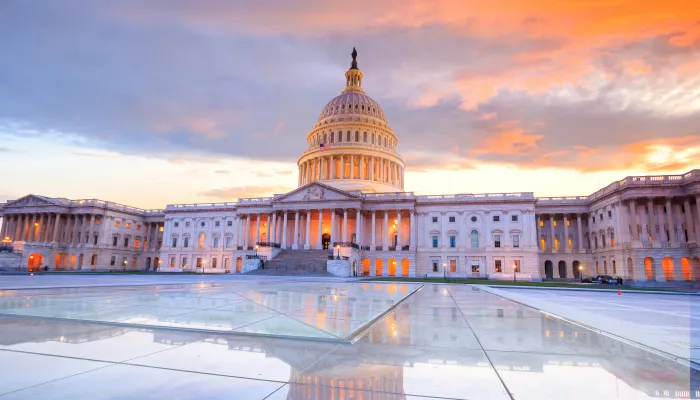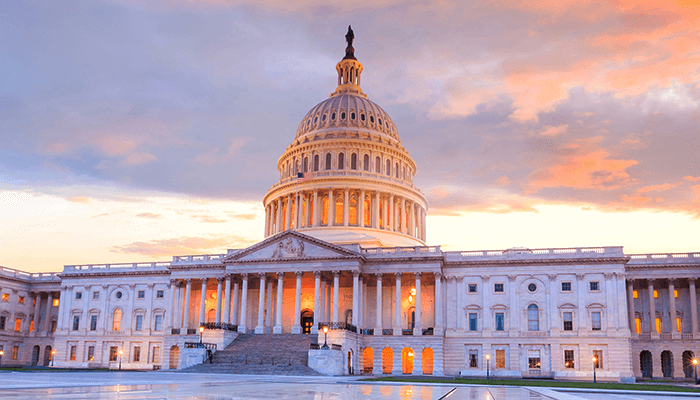Op-Ed: Sequester Isn't Enough
USA Today | March 13, 2013
Just as Republicans and Democrats are poised for the next battle to bring down deficits through their budget proposals, a new argument is emerging about the impact of the sequestration. The New York Times, among others, is reporting that these forced cuts, combined with other negotiated savings, get us close to the deficit reduction we need — $4 trillion over the next decade. This is dangerously misleading, whether or not sequestration remains intact in budget negotiations.
The truth is we are not even close to addressing the real drivers of our fiscal cancer, and we're running out of time. Let's set the record straight on the myths standing in the way of budget sanity:
Reductions in the projected 10-year deficit matter. That's the wrong target. Those figures are easily and often manipulated. Assumptions about the future and technical details drive the numbers as much as real change in government programs. The measure of progress less prone to manipulation is the percentage of public debt to GDP.
Most economists will tell you that if we want to avoid economic harm and damage to our ability to respond to foreign crises or domestic catastrophes, we should stabilize public debt at about 60% of gross domestic product. Back in 2010, before any of the deficit reduction deals took place, the Congressional Budget Office (CBO) projected under its more realistic set of assumptions that public debt to GDP would be 100% by 2023. Based on reasonable assumptions, budget agreements since then have resulted in an estimated debt to GDP no lower than 80% in 2023 and rising thereafter. That's progress, but to get moving in the right direction, we need to add $1.5 trillion or so to the $4 trillion in deficit cuts so far.
Cuts to our deficit are coming overwhelmingly from spending, not tax increases. That's exaggerated. The Times asserts that cuts to date represent $4 in spending reductions to every $1 in new revenue. But that calculation conveniently excludes the anticipated costs of the Affordable Care Act.
At the time of enactment, the congressional budget watchdog said the health law would increase spending by $382 billion over 10 years and raise taxes by $525 billion. Based on these estimates, the law would decrease the deficit, so why not include these spending and revenue numbers in the ratio?
If you do, we get a ratio of spending cuts to revenue increases of less than 2 to 1. Quite a change. Even that could be too optimistic. The chief actuary of Medicare reports that over 75 years, projected savings from health reform might come in short $10 trillion.
Federal budget cuts we've made are improving the long term budget outlook. That's flat out wrong. We have not made significant cuts to the part of the budget that is responsible for our mounting fiscal problems. As of today, 64% of our federal budget is mandatory spending, meaning that it is on autopilot rather than voted on by Congress. By 2023, it is projected to be 76% of the budget. Medicare, Medicaid and Social Security account for most mandatory spending and, along with other health care costs, are the real drivers behind our growing long-term debt. Our aging population will also help ensure that these budget items gobble up more and more federal money.
Yet, except for revenue raised in the recent "fiscal cliff" deal, our reduction has come largely from cuts in discretionary spending. This is money that goes to our national defense as well as to investments in our future, such as education, transportation, infrastructure and research. Without sufficiently funding these needs, America will not grow as fast and will become less competitive over time. In 2023, discretionary spending will be 5.5% of the economy, split roughly between defense and non-defense programs. That's a huge drop from today's 7.7%.
The fiscal proposal from House budget Chairman Paul Ryan properly recognizes that spending on mandatory programs, including Medicare and Medicaid, needs to be reduced. However, it fails to provide the additional revenue needed to avoid more discretionary spending cuts. While Senate budget Chair Patty Murray has yet to release her fiscal plan, it will likely include significantly more revenue, but it is unclear how much in reductions to programs like Medicare, Medicaid and Social Security will be included.
Elected officials must recognize that slashing discretionary spending doesn't treat our fiscal disease. Our elected officials should tell the American people the truth about our fiscal condition and its causes.
Until we fundamentally reform our tax code in a way that brings in more revenue, address demographic trends that threaten our social insurance system, and rein in heath care, we can't claim to have achieved deficit reduction in an honest and meaningful way. Meanwhile, the clock is against us: 2014 is an election year for Congress, and a "grand bargain" will be off the table for political reasons. The presidential election cycle kicks in right after. Tough choices will get delayed further.
All of which means that 2013 is the time to act. There is a critical opportunity to speak truth, think big and act bold. Right now, we are getting the opposite from our elected officials.

